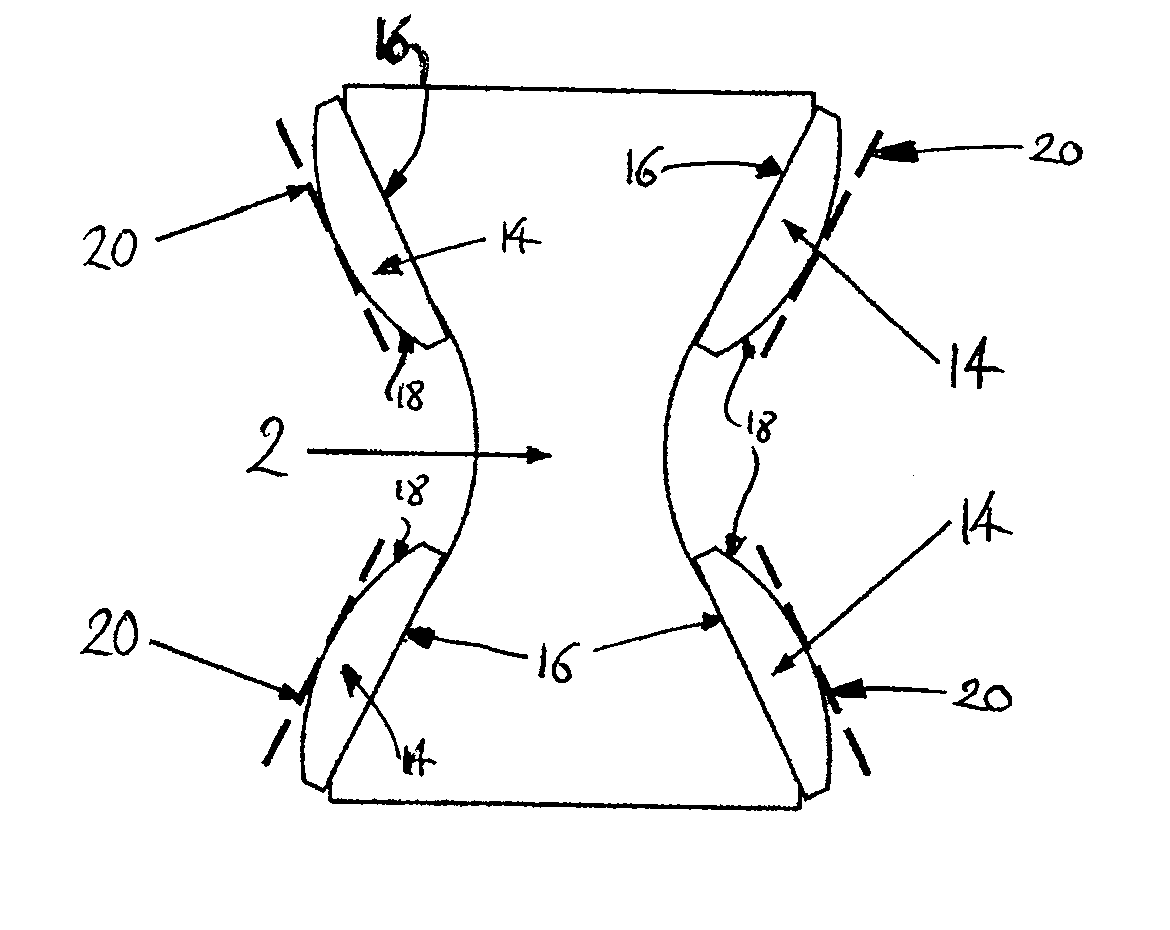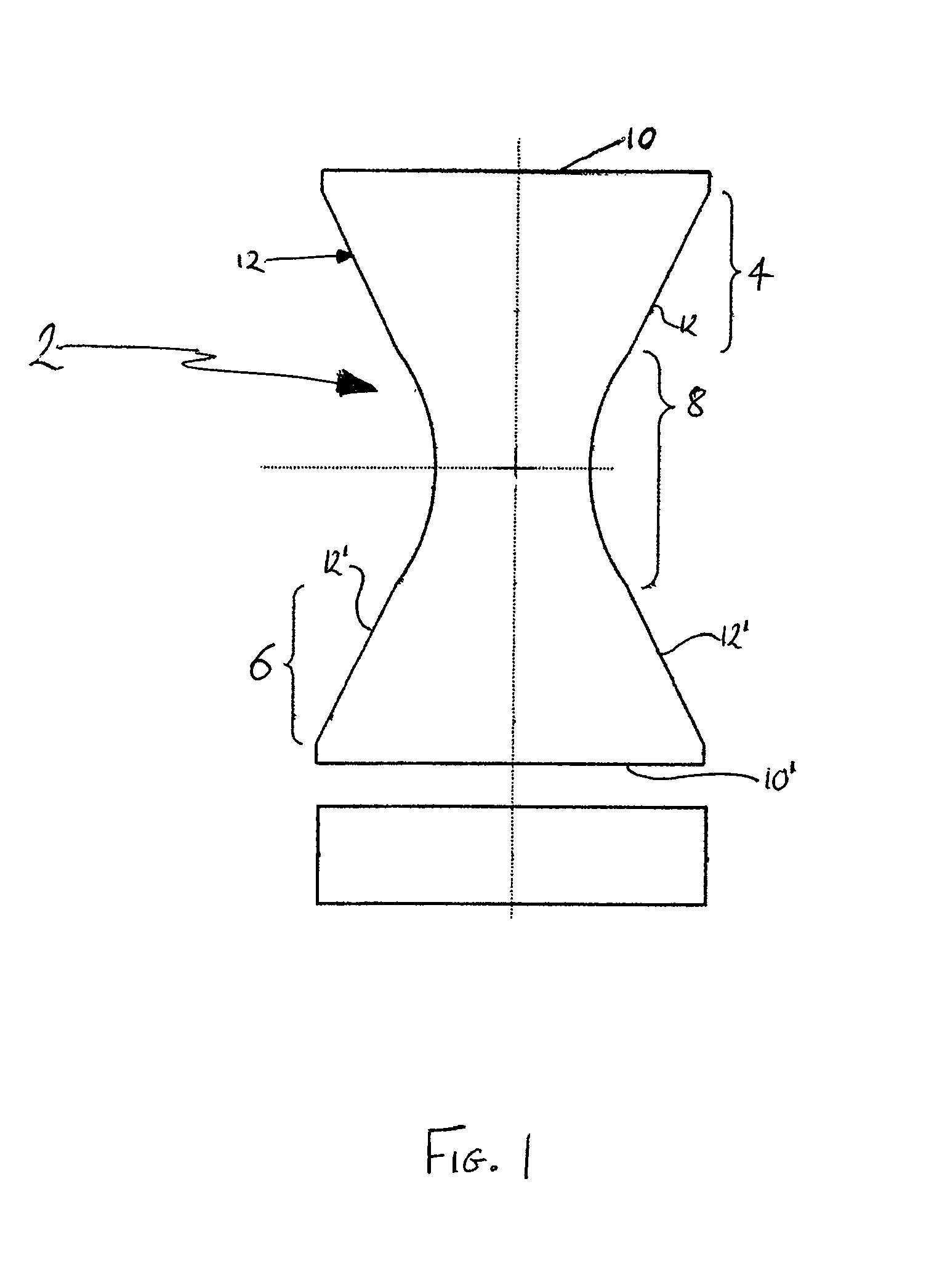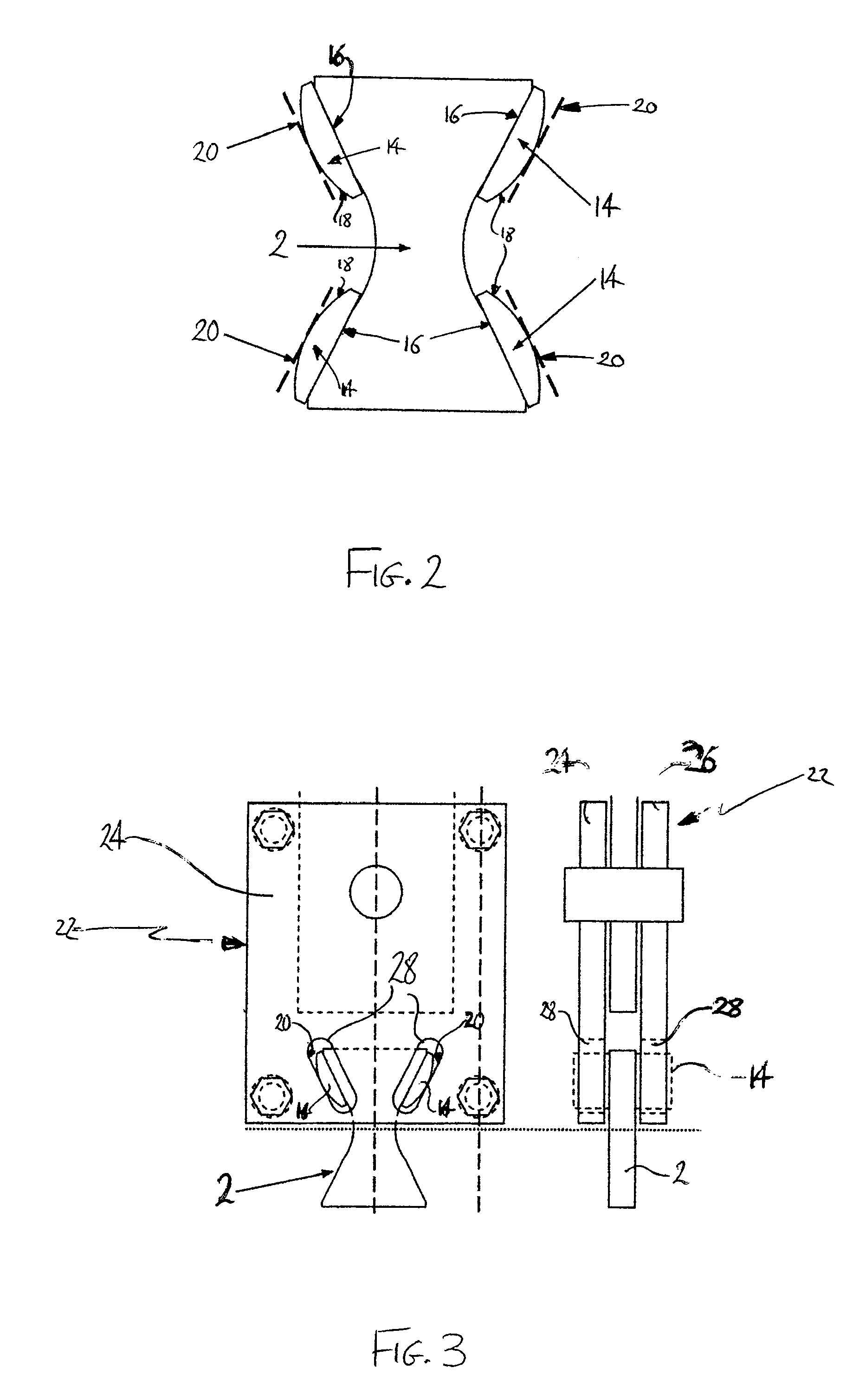Method and apparatus for testing composite materials
a composite material and test method technology, applied in the direction of measuring devices, scientific instruments, instruments, etc., can solve the problems of low apparent through-thickness tensile strength, inability to extract coupons directly, and inability to generate true through-thickness tensile strength data for materials containing reinforcement in more than one direction
- Summary
- Abstract
- Description
- Claims
- Application Information
AI Technical Summary
Problems solved by technology
Method used
Image
Examples
Embodiment Construction
[0024]FIG. 1 illustrates a front and top elevation of a test coupon according to an embodiment of the present invention. The front elevation shows a two-dimensional ‘hourglass’ shape, with the coupon having a constant thickness, as indicated by the rectangular top elevation. The coupon 2 comprises generally of three regions; first and second load introduction regions 4,6 at either end of the coupon and a gauge section 8 adjoining each load introduction region. Each of the first and second load introductions regions 4,6 have a generally trapezoidal shape orientated such that the longer of the parallel sides 10, 10′ form the ends of the coupon and the shorter of the parallel sides adjoining the gauge section 8. The angled sides 12, 12′ of each load introduction region form the load introduction surfaces to which the test loads are applied. As will be explained further below, the load introduction surfaces are specifically arranged to receive the test load. The load introduction surfac...
PUM
| Property | Measurement | Unit |
|---|---|---|
| angle | aaaaa | aaaaa |
| angle | aaaaa | aaaaa |
| included angle | aaaaa | aaaaa |
Abstract
Description
Claims
Application Information
 Login to View More
Login to View More - R&D
- Intellectual Property
- Life Sciences
- Materials
- Tech Scout
- Unparalleled Data Quality
- Higher Quality Content
- 60% Fewer Hallucinations
Browse by: Latest US Patents, China's latest patents, Technical Efficacy Thesaurus, Application Domain, Technology Topic, Popular Technical Reports.
© 2025 PatSnap. All rights reserved.Legal|Privacy policy|Modern Slavery Act Transparency Statement|Sitemap|About US| Contact US: help@patsnap.com



